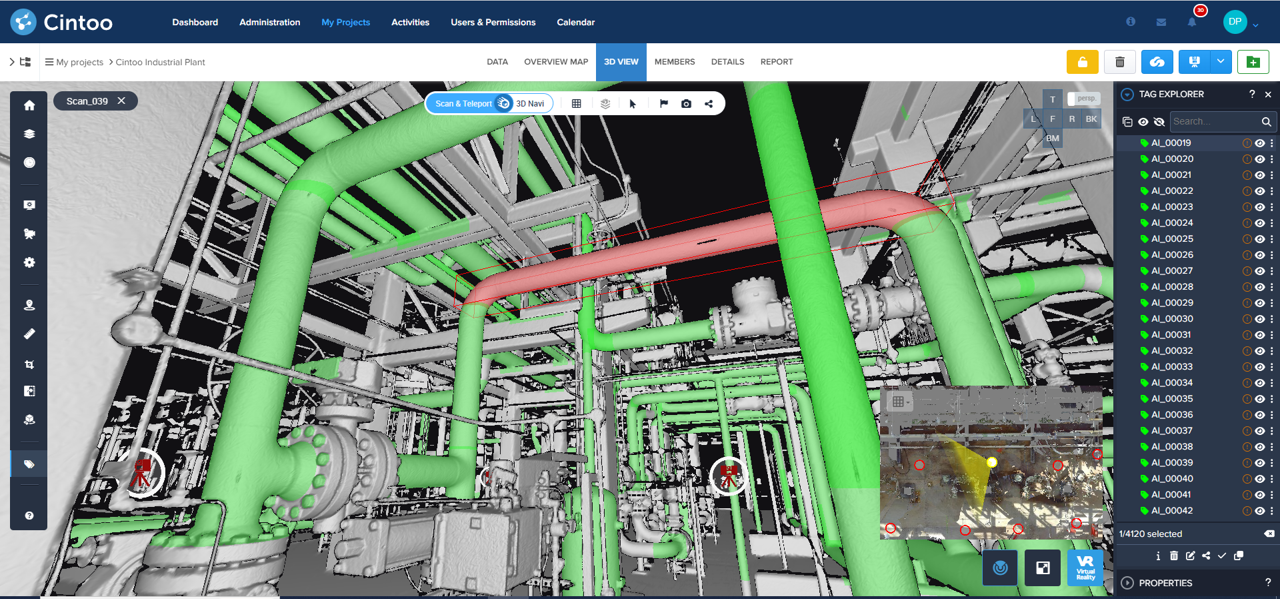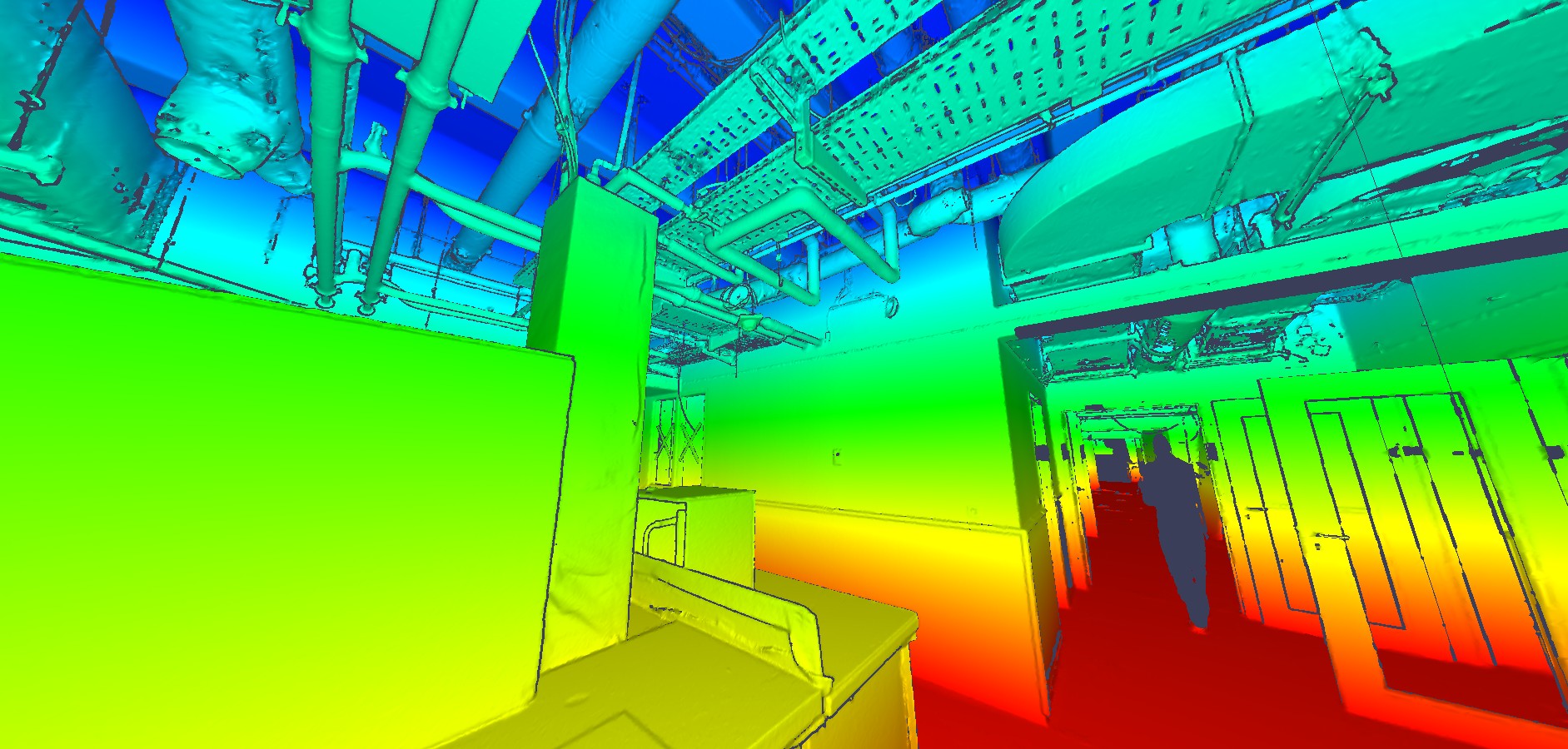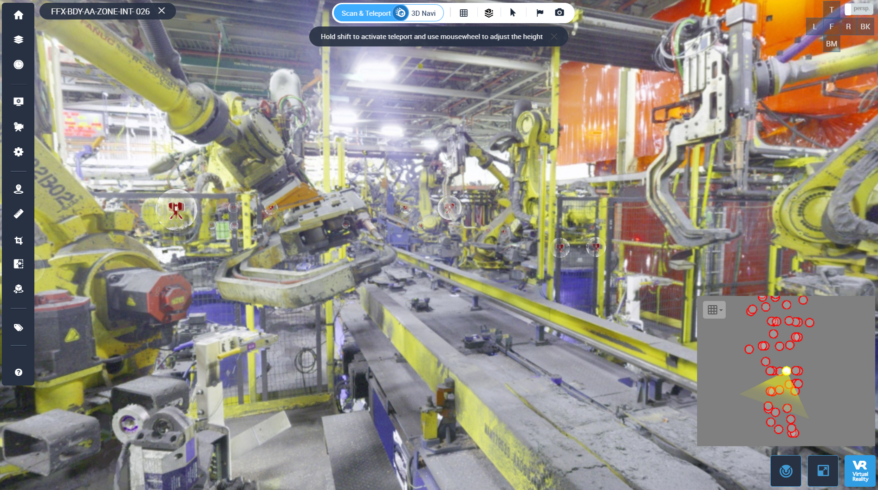
Leveraging Point Cloud Technology for Energy Asset Management
The energy industry is under constant pressure to improve operational efficiency, reduce costs, and ensure safety across vast and complex infrastructure. From power plants and pipelines to renewable energy assets, managing these systems effectively requires precise, real-world data. This is where point cloud technology comes into play.
Point clouds are transforming energy asset management by providing highly detailed, 3D digital replicas of infrastructure, enabling better decision-making and improved lifecycle management. However, managing massive point cloud datasets can pose significant challenges. New solutions show that optimizing point cloud data for better processing, visualization, and collaboration is possible.
This article will explore what point clouds are, why they’re crucial for energy asset management, and how Cintoo makes leveraging point cloud technology both scalable and efficient.
What is a Point Cloud?
A point cloud is a collection of millions—or even billions—of data points captured using 3D scanning technologies like LiDAR (Light Detection and Ranging) or laser scanning. These points represent the surface geometry of objects and environments, enabling the creation of accurate, high-resolution 3D digital models.
How Point Clouds Are Processed
- Data Capture: 3D scanners or drones equipped with LiDAR sensors sweep the physical environment to collect millions of points per second.
- Point Cloud Creation: These raw data points are processed into visual datasets that form precise 3D models.
- Visualization and Analysis: Specialized software allows stakeholders to analyze and measure the models for inspections, simulations, and decision-making.

Why Point Cloud Technology is Crucial for Energy Asset Management
The energy sector manages vast and geographically dispersed infrastructure, from refineries and pipelines to wind farms and solar fields. Traditional methods of asset inspection and monitoring are often costly, time-consuming, and potentially hazardous.
Point cloud technology addresses these challenges by providing:
1. Accurate Asset Visualization
Point clouds deliver an exact 3D representation of physical assets, enabling stakeholders to visualize and analyze infrastructure in detail. This level of accuracy helps identify issues such as structural wear, corrosion, or inefficiencies before they escalate. As Chris Anderson, CAD Designer for Terminal and Pipeline Facilities at BP, notes, “With precise digital representations of our assets, we can streamline maintenance and ensure our infrastructure performs optimally over its lifecycle.”

2. Improved Safety and Reduced Downtime
Energy assets are often located in hazardous or remote environments. Point clouds allow teams to perform remote inspections virtually, reducing the need for site visits, ensuring worker safety, and minimizing downtime.
3. Enhanced Collaboration and Planning
By capturing a single, accurate source of truth, point cloud models allow engineers, asset managers, and contractors to collaborate more effectively. Design changes, inspections, and maintenance plans can be executed seamlessly. There is no miscommunication when point cloud data is processed and visualized, especially when it becomes highly coordinated in a centralized platform like Cintoo.
4. Lifecycle Management
From construction to decommissioning, point clouds ensure energy assets are documented at every stage. This improves long-term maintenance, planning, and decision-making.
Without point clouds, asset managers risk relying on outdated, manual processes that fail to capture the scale and complexity of energy systems.
The Challenge of Managing Point Cloud Data
While point clouds offer immense value, managing and processing these massive datasets can be a significant hurdle:
- Massive File Sizes: Raw point cloud data can range from hundreds of gigabytes to terabytes, making it difficult to store, share, or process efficiently.
- Complexity: Extracting actionable insights from point clouds requires specialized software and workflows.
- Collaboration Barriers: Sharing large datasets across teams and stakeholders often leads to delays and inefficiencies.
These challenges can prevent energy companies from fully leveraging point cloud technology for their asset management needs.
How Cintoo Optimizes Point Cloud Data for Energy Asset Management
Cintoo offers a game-changing solution for processing, visualizing, and collaborating on point cloud data. Cintoo, a web-based platform, transforms massive point clouds into cloud-compatible formats that are easy to access, share, and analyze. Cintoo’s innovative TurboMesh™, converts point clouds to 3D surfaces (3D meshes) with the same detail and resolution as your source scans to facilitate interpretation by experts and non-experts alike.

Key Features of Cintoo
- Data Compression Without Compromising Quality
Cintoo leverages its proprietary technology to compress massive point cloud datasets into lightweight yet high-fidelity formats. This dramatically reduces storage requirements while retaining accuracy.
- Collaborative Visualization
Cintoo allows teams to upload, visualize, and annotate 3D scans through a web-based interface. Asset managers, engineers, and stakeholders can explore models collaboratively without downloading massive files.
- Seamless Integration with BIM and Digital Twins
Cintoo integrates with Building Information Modeling (BIM) software and digital twin platforms, enabling energy companies to link their point cloud data with existing asset management workflows.
- Scalability for Large Projects
Cintoo makes it easy to manage, analyze, and share point cloud data for complex and large-scale energy infrastructure projects—whether it’s an offshore wind farm, refinery, or sprawling pipeline network. As Chris Anderson notes, “Cintoo allows us to process massive point cloud datasets efficiently, helping us inspect assets and make decisions faster and more accurately.”
Real-World Applications of Point Cloud Technology in Energy
Here’s how point clouds, powered by platforms like Cintoo, are revolutionizing energy asset management:
Oil and Gas Facilities
- Inspect pipelines, storage tanks, and refineries for corrosion or structural weaknesses.
- Use point clouds for accurate digital twins to simulate maintenance plans
Power Plants
- Monitor aging infrastructure to ensure reliability and regulatory compliance.
- Perform remote inspections to reduce downtime and operational risks.
Renewable Energy
- Optimize wind turbine layouts using 3D scanning data.
- Inspect solar farms for panel performance and maintenance needs.
Transmission and Distribution Networks
- Use point clouds to analyze high-voltage lines, towers, and substations for wear or damage.
- Plan infrastructure upgrades or expansions with precise 3D models.
The Future of Energy Asset Management with Point Cloud Technology
As the energy sector continues to evolve, point cloud technology is proving to be a transformative tool for asset management. By providing accurate, high-resolution 3D representations of infrastructure, point clouds improve decision-making, enhance safety, and reduce operational costs.
However, the challenges of managing massive point cloud datasets require an innovative solution. Cintoo addresses these challenges head-on, enabling energy companies to process, visualize, and collaborate on point cloud data with ease.
With Cintoo, energy asset managers can embrace the future of digital asset management, ensuring their infrastructure remains safe, efficient, and resilient.
Ready to unlock the full potential of point cloud technology for your energy assets?
Learn how Cintoo can streamline your workflows and drive better outcomes.



